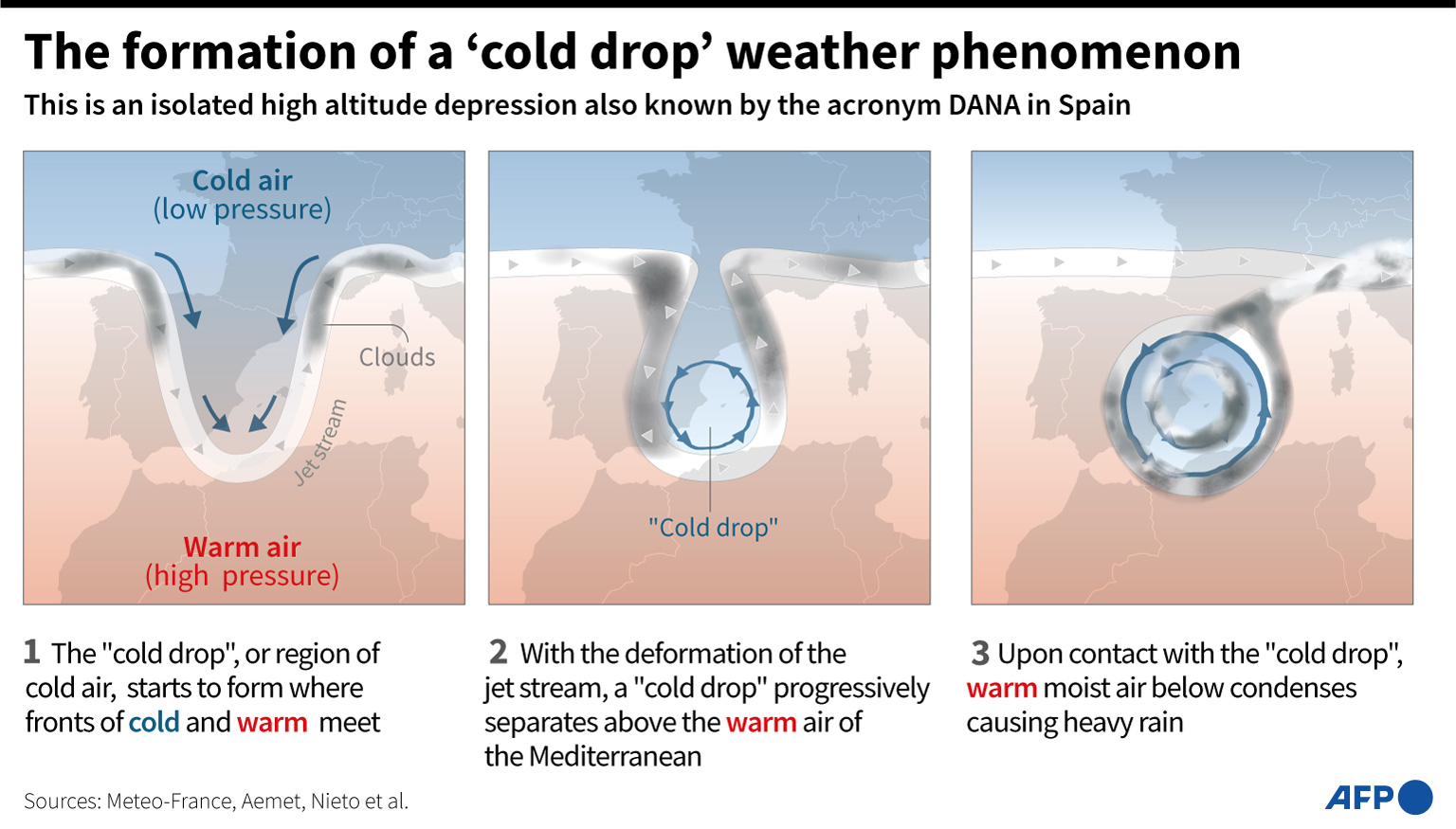In recent weeks, Spain has experienced heavy rainfall, leading to catastrophic flooding in several regions. The floods have claimed lives, destroyed infrastructure worth billions, and forced many residents to flee their homes. New flood warnings have also been issued.
What caused the Flood?
The flood is caused by a weather phenomenon called “cold drop” or “gota fría” in Spanish. This occurs in the autumn and leads to heavy rainfall. But why did it last so long this time?
Usually, weather systems pass quickly. This time, however, a low-pressure system remained over Spain for several days. To understand why, we need to look at the jet streams. Jet streams are powerful wind currents high in the atmosphere that move from west to east. They act as a boundary between warm temperatures in the south and cold temperatures in the north. When the jet stream meanders too much and encounters obstacles like mountains, “drops” can form. The air in these “drops” has a different temperature than the surrounding air, creating large pressure differences. The figure shows the formation of a “cold drop”.

In this case, a “drop” of cold air ended up over Spain. This created a powerful low-pressure system that brought strong winds, carrying warm and humid air from the Mediterranean towards Spain. The image above (Zoom Earth, 30th of October) shows how the low-pressure system was positioned over Spain on October 30. When this warm air met the cold air, large rain clouds formed, leading to heavy rain for several days.
Climate Change and the Future
This is not the first time Spain has experienced heavy rain in the autumn, but climate change is making such events more frequent and intense. Climate change leads to higher temperatures, and since warm air holds more moisture, there is more water vapor in the atmosphere and thus more precipitation. Additionally, the oceans are getting warmer, providing more moisture to the air. In this case, the heat and moisture from the air over the Mediterranean served as fuel for the extreme weather, sustaining the low-pressure system. This effect will increase as sea temperatures rise.
Jet streams can also be affected by climate change. Temperatures are rising the most at the poles, leading to a smaller temperature difference between the equator and the poles. This contributes to weaker jet streams, causing high and low-pressure systems more frequently to remain over the same area for longer periods. This leads to extreme weather such as floods, but also droughts, becoming more common and even more extreme.
